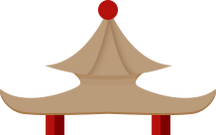The Correspondence of the Five Elements in the Zhou Yi
Five Elements: Metal (Jin), Wood (Mu), Water (Shui), Fire (Huo), Earth (Tu)
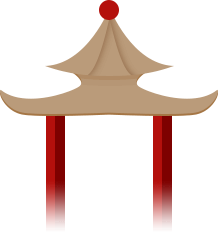
The Five Elements are interrelated through generation and overcoming.
Generation: Wood generates Fire, Fire generates Earth, Earth generates Metal, Metal generates Water, Water generates Wood; this represents development.
Overcoming: Wood overcomes Earth, Earth overcomes Water, Water overcomes Fire, Fire overcomes Metal, Metal overcomes Wood; this represents balance.
【Five Qi】
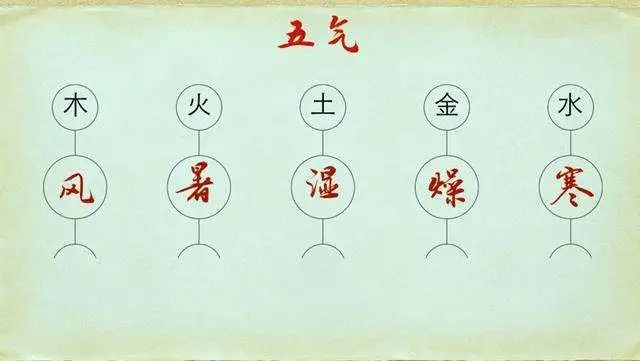
The Five Qi in Traditional Chinese Medicine (TCM) correspond to the attributes of the Five Elements, namely Cold, Heat, Dryness, Dampness, and Wind. As stated in the “Su Wen: Theory of Six Qi and Organ Manifestations”: “Heaven nourishes humans with the Five Qi, and Earth nourishes humans with the Five Tastes. The Five Qi enter through the nose and are stored in the heart and lungs.” In the “Yi Zong Jin Jian: Essentials of the Four Diagnostic Methods”: “Heaven has Five Qi, which enter humans through the nose and are stored in the Five Zang organs.” Note: “Heaven nourishes humans with the Five Qi of Wind, Heat, Dampness, Dryness, and Cold, entering through the nose.”
Stench Qi (Liver belongs to Wood), Burnt Qi (Heart belongs to Fire), Fragrant Qi (Spleen belongs to Earth), Fishy Qi (Lung belongs to Metal), and Putrid Qi (Kidney belongs to Water)
【Five Stars】
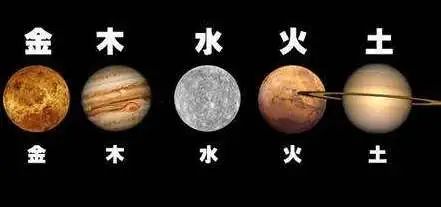
In ancient times, the Chinese ancestors conducted detailed explorations of the changes in cosmic phenomena. They discovered that in the sky of the North Star, five stars appeared in sequence: Wood, Fire, Earth, Metal, and Water, which influenced the changes of life on Earth.
Jupiter, appearing in the east during spring, is called Jupiter because it appears when grass and trees begin to sprout, marking the arrival of spring.
Mars, appearing in the south during summer, is called Mars because it appears during the hot summer.
Saturn, appearing between summer and autumn, is called Saturn because it shines down on the observer’s ground, marking the earth.
Venus, appearing in the west during autumn, is called Venus because it appears during the harvest season. Using sharp metal tools, this is also the season when most plants wither and die, marking autumn.
Mercury, appearing in the north during winter, is called Mercury because it appears during the icy and snowy season, marking the cold winter.
【Five Colors】

In spring, the Five Elements belong to Wood, located in the east, where all things grow, thus the color of Wood is green;
In summer, the Five Elements belong to Fire, located in the south, where the sun is scorching and the weather is hot, thus the color of Fire is red;
Earth is in the center, holding a respected position, thus the color of Earth is yellow.
In autumn, the Five Elements belong to Metal, located in the west, where “Metal” represents “metals”, and the general color of metals is white;
In winter, the Five Elements belong to Water, located in the north, where the colors of Water are black and blue.
【Four Seasons, Five Directions】
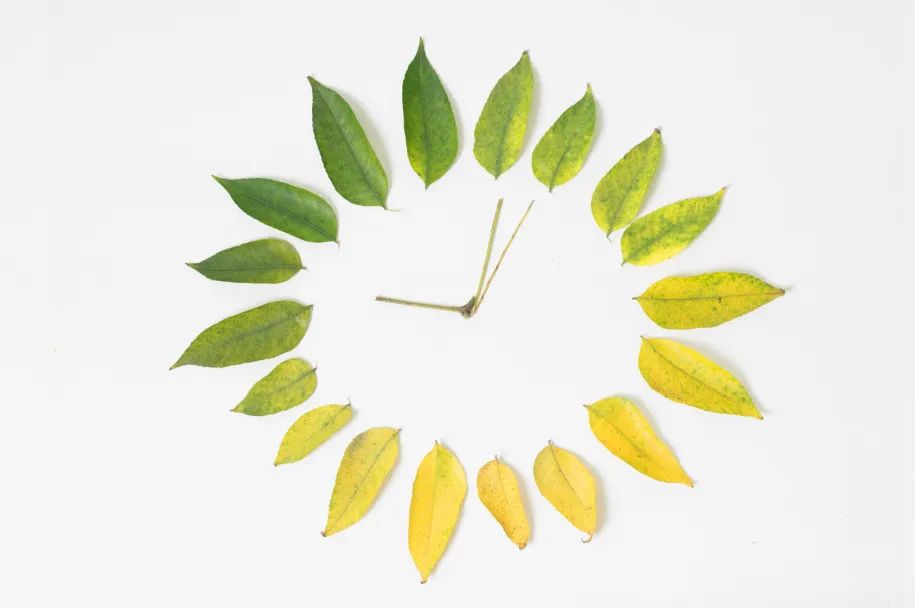
Spring: Its position is in the east, named Jia and Yi, representing Wood. Summer: Its position is in the south, named Bing and Ding, representing Fire. Autumn: Its position is in the west, named Geng and Xin, representing Metal. Winter: Its position is in the north, named Ren and Gui, representing Water.
Each season’s last month is in the center, occurring during the lunar months of three, six, nine, and twelve, marking the transition of the four seasons, named Wu and Ji, representing Earth.
【Five Spiritual Beasts】
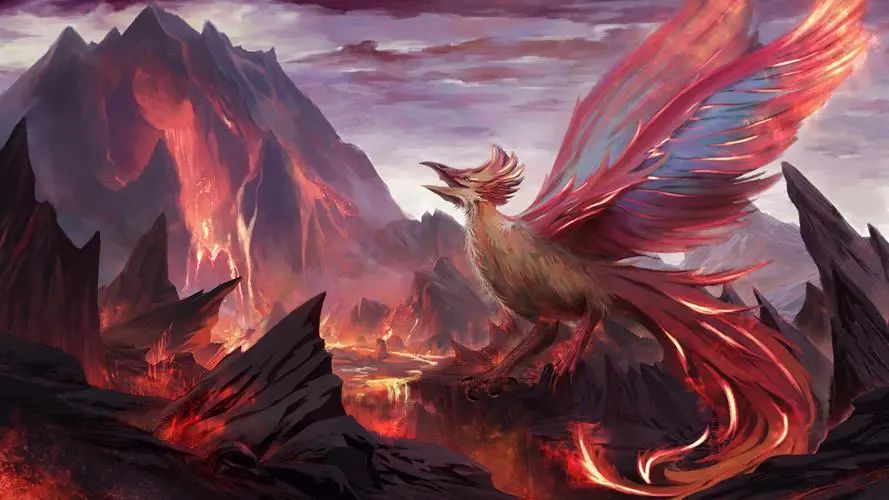
The Five Spiritual Beasts are:
The Azure Dragon, with many legends surrounding it, has various origins; some say it was introduced from India, while others believe it transformed from Chinese constellations. In China, the dragon is a divine creature, supreme and a symbol of the emperor, representing the east. The constellations are imagined as the seven stars of the eastern seven constellations: Jiao, Kang, Zhi, Fang, Xin, Wei, and Ji, which ancient people envisioned as the image of a dragon, thus named “Azure Dragon” due to its eastern color.
The Vermilion Bird, representing Fire, is a spiritual creature symbolizing happiness in China. Its original form has many variations, such as the golden pheasant, peacock, eagle, crane, and the mysterious bird (swallow). It is also said to have transformed from the Buddhist golden-winged Dapeng bird. In the phoenix mythology, the phoenix has the head of a chicken, the chin of a swallow, the neck of a snake, the tail of a fish, and five-colored patterns. The phoenix is divided into five varieties based on color: red is the phoenix, green is the Luan, white is the swan, and there are also yellow and purple phoenixes, which can be referred to as the Vermilion Bird or the mysterious bird. The Vermilion Bird is one of the Four Spirits, representing the south, belonging to the Fire element, and like the other three, it originates from the seven constellations of the south: Jing, Gui, Liu, Xing, Zhang, Yi, and Zhi. It is associated with the characteristic of being reborn from fire, similar to the western phoenix, hence also called the Fire Phoenix.
The Qilin, representing Earth, is part of traditional Chinese folklore, such as the Qilin delivering children, which is an old custom regarding childbirth in China. Legend has it that the Qilin is a benevolent beast, a symbol of good fortune, capable of bringing offspring to people. It guards the center, hence also called the “Central Divine Beast”. The Qilin ranks second among beasts, following the dragon. In ancient Chinese legends, the Qilin, along with the dragon, phoenix, and turtle, forms the Four Spirits, being the king of all mammals; it is said that on the night of Confucius’s birth, a Qilin spat out a jade book at his home, inscribed with “Descendants of the Water Spirit, declining Zhou and the pure king”, implying he possesses the virtues of a king but has not yet taken his position.
The White Tiger, representing Metal, is the god of war and the god of slaughter in China. In the minds of ancient people, the tiger was both a fearsome and a respected creature. It is feared for its ability to prey on humans and livestock, yet respected for its unmatched ferocity, capable of warding off evil. In some ancient texts, such as the “Customs and Traditions of the Eastern Han Dynasty” by Ying Shao: “Drawing a tiger on the door, ghosts do not dare to enter”, “The tiger is a yang creature, the leader of all beasts.”
The Black Tortoise, representing Water, is a spiritual creature formed by the combination of a tortoise and a snake. Like the other three spirits, the Black Tortoise also originates from the twenty-eight constellations: Dou, Niu, Nu, Xu, Wei, Shi, and Bi. According to ancient records, the Pixiu is a fierce beast, one of the five auspicious beasts of ancient times (dragon, phoenix, tortoise, Qilin), known as the wealth-attracting beast. It is also called Tianlu and Bixie, believed to transform misfortune into good fortune. As a mythical creature in ancient Chinese legends, it has the head of a dragon, the body of a horse, the feet of a Qilin, and resembles a lion, with grayish-white fur and the ability to fly.

